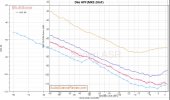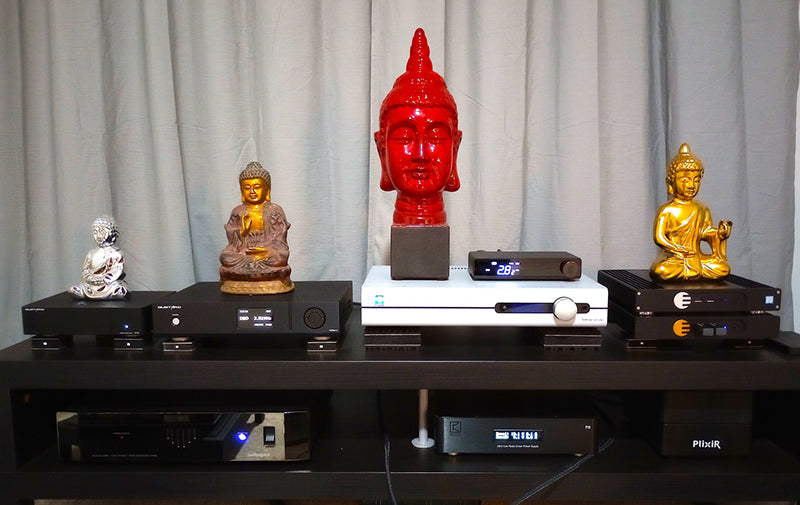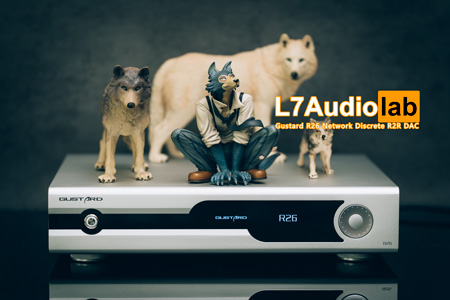Before I start talking, here is l7audiolab's IMD chart for Topping's E70 Velvet, which uses the AK4499EXEQ chipset ((((AK4499EXEQ is post-fire AKM 4499 - it is two chips now, called: AK4499EX and AK4191EQ. Digital processing (ie. oversampling and other optimizations) is done in the 4191, and digital to analog conversion and nothing else at all (no, nothing) is done in the 4499. Separation why? Mainly to reduce noise from interference from proximity of different circuit types)))

For comparison, below is l7audiolab's standard E70 performing the same test (E70 uses ESS's ES9028PRO). I used l7audiolab instead of Amir's to have both charts from the same place.

The ES9028PRO version of the E70 seems to have a tiny bit of ESS IMD hump in the -32dB to -23dB range, which disappears completely by -20dB, followed by the common and non-problematic slowly increasing distortion from -18dB to -8dB, levelling between -8dB and 0dB, at -112dB. We'd probably see the same, slow, increase in distortion on the E70 Velvet if its IMD hump didn't so drastically affect the shape of the line.
The IMD hump of the AKM chip seems to rear its head at higher level than the [typical] ESS IMD hump. The E70's ES9028PRO's little baby bump of an IMD hump is in the usual position, maybe 2-3dB lower than usual. I think the top half of the E70's ESS IMD hump was completely flattened, and the bottom half remains, so it just looks lower than usual. Anyway... this isn't about the E70, it's about the E70 Velvet, and its IMD hump!
So the E70 Velvet's hump is much more defined than we're used to seeing from ESS.
OK, that's all I have to say on the issue! Lol, I've observed it, and that's all I know!
Oh, I do know one other thing - Techpowerup, they reviewed both the E70 and E70 Velvet. In the process, they opened them both up. They didn't fully disassemble them because there were some difficult to access ribbon cables which connected stuff to the front panel, but they pulled out the boards as far as they could and looked. They said the internals were essentially the same between the devices, except for the DAC part. edit: oh, and ver. Velvet has a slightly upgraded power supply for one of its parts. Not a huge deal.
I think it's great that there are two DACs sharing the same platform - it gives a good opportunity for analysis!
So what's everyone's thoughts? I think this is a really rare find - is it not as rare as I seem to think it is?
To add: irrelevant but I'm curious if anyone knows: have non delta-sigma DACs been observed humping IMD like ESS?
For comparison, below is l7audiolab's standard E70 performing the same test (E70 uses ESS's ES9028PRO). I used l7audiolab instead of Amir's to have both charts from the same place.
The ES9028PRO version of the E70 seems to have a tiny bit of ESS IMD hump in the -32dB to -23dB range, which disappears completely by -20dB, followed by the common and non-problematic slowly increasing distortion from -18dB to -8dB, levelling between -8dB and 0dB, at -112dB. We'd probably see the same, slow, increase in distortion on the E70 Velvet if its IMD hump didn't so drastically affect the shape of the line.
The IMD hump of the AKM chip seems to rear its head at higher level than the [typical] ESS IMD hump. The E70's ES9028PRO's little baby bump of an IMD hump is in the usual position, maybe 2-3dB lower than usual. I think the top half of the E70's ESS IMD hump was completely flattened, and the bottom half remains, so it just looks lower than usual. Anyway... this isn't about the E70, it's about the E70 Velvet, and its IMD hump!
So the E70 Velvet's hump is much more defined than we're used to seeing from ESS.
OK, that's all I have to say on the issue! Lol, I've observed it, and that's all I know!
Oh, I do know one other thing - Techpowerup, they reviewed both the E70 and E70 Velvet. In the process, they opened them both up. They didn't fully disassemble them because there were some difficult to access ribbon cables which connected stuff to the front panel, but they pulled out the boards as far as they could and looked. They said the internals were essentially the same between the devices, except for the DAC part. edit: oh, and ver. Velvet has a slightly upgraded power supply for one of its parts. Not a huge deal.
I think it's great that there are two DACs sharing the same platform - it gives a good opportunity for analysis!
So what's everyone's thoughts? I think this is a really rare find - is it not as rare as I seem to think it is?
To add: irrelevant but I'm curious if anyone knows: have non delta-sigma DACs been observed humping IMD like ESS?
Last edited:






